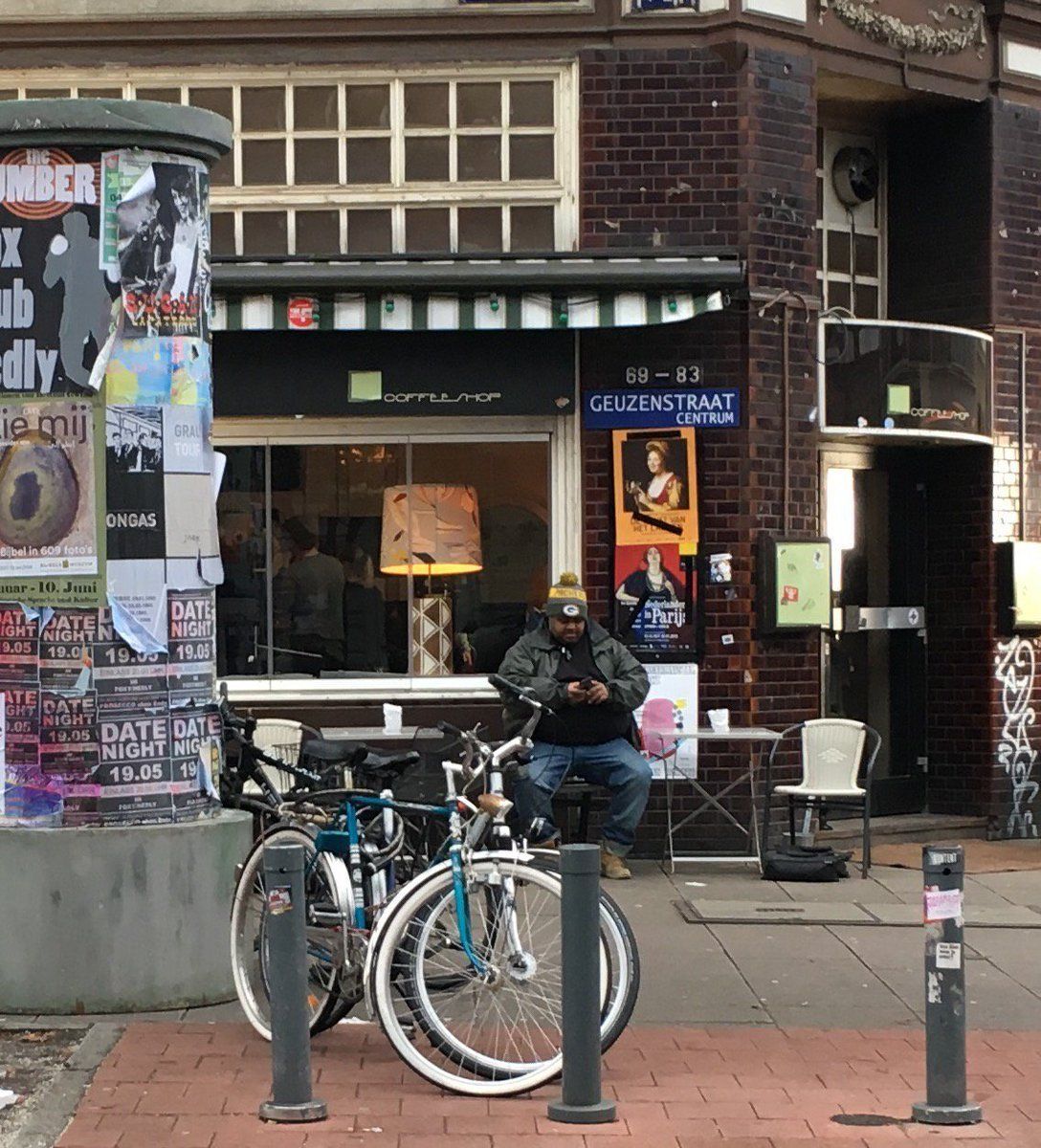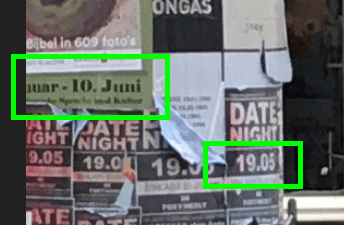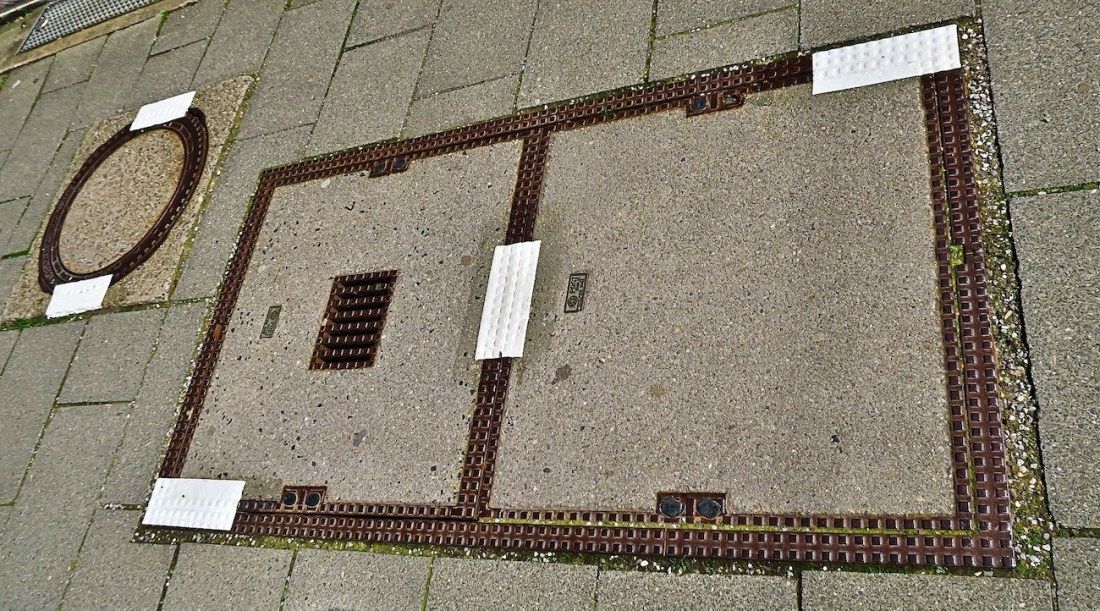
IYP 不是过眼云烟的新闻网站,我们提供实战能力,这里是值得您反复回看的档案室:iyouport.org
Detective Challenge Time: Let Manhole Covers and Bicycles Talk
The search doesn't start with the tool, but with the human eye -- the eye will tell you which clues are worth digging into.
It's still a detective challenge game, but this one is different in that it doesn't require any tools to do it.
At the end, we summarize the three basic abilities that you need to focus on as a citizen investigator.
- This challenge can be done without using any technical tools, just with your eyes

Remember the Detective Challenge series? You can recap below:
- " Where Is That Military Vehicle Going?" : Detective Challenge Time
- The Detective Challenge Game: Two Ways to Quickly Geolocate
- The Detective Challenge: Circumstantial Evidence and the Law of Exclusion
- Detective Challenge Mini Game: Quiztime
- Using Movies as a Detective Challenge Demo: An Open Source Investigation Game
This time around is another detective challenge posed by Fiete Stegers .
This is a demo that Sector035 participated in. No tools are used here, but the focus is on something equally important: excluding specific locations based on visible cues in the photo .
This is a very important way of thinking for investigative work.
The title is the photo below, where was it taken?

It's a pretty generic photo, without any meaningful landmarks, and the overall style looks a lot like Amsterdam. But really?
The first step now is to look at it carefully for the available details. At the most basic level you can see :
- This architectural style can actually be found a lot in Amsterdam;
- The type and font of street signs are in line with the characteristics of the Netherlands;
- The Dutch language can be seen on the pillar covered with advertisements;
- And the poster at the entrance of that door, which is the Dutch spelling of Paris;
- bike;
- And apparently there are coffee shops.
Well, it seems like a whole bunch of clues could point to Amsterdam - but, that answer is wrong .
As for the style of the building, the shape and size of the bricks and the structure shown, perhaps not currently common, but was common in Amsterdam in the 50s to 70s.
It's not Amsterdam, so where exactly is it?
street location
If you try to zoom in on the exact location, there is a problem with the Amsterdam answer.
Because, the street sign shown in this photo cannot be found in Amsterdam!

The reason is that this street is not in "Amsterdam Center", but in the former borough called "de Baarsjes", which is now merged with some other boroughs into a new "Amsterdam West".
So this is the first indication that the photo might not have been taken in Amsterdam at all.
date mark
The second thing that stands out is that even though all the ads look Dutch (and some of them look real), I can tell you that in the Netherlands we use a different date format.
It's okay if you don't know this, just do a quick Wikipedia search. Looking at the German section of the wikipedia page on how to write dates, you'll see the following in DIN 5008:

Looking again at the Dutch section of the Wikipedia page, it is clear that the Dutch almost never use "dots" in dates, the Dutch prefer slashes or dashes or straight hyphens.
So if it's the Netherlands, you should see something like 7/1/2003 or 7–1-'03. Most of the time, the Dutch do use the same DMY notation for informal use, as the Germans often do. I've never seen Dutch people use "dot" when writing dates.
But that's not the basis.

In addition to these points, another clue to Germany can be found on the placard to the left of the photo.
Look carefully, there is the word "Januar" on it, which means "January" in German, and "Januari" in Dutch.
The German and Dutch pairs of "June" are the same, both are "Juni".
about bicycles
As many tourists know, Amsterdam in particular is known for its abundance of bicycles. Here are some interesting stories about cycling in Amsterdam.
Yes, there really are a lot of bikes here!
So what exactly does the bike shown in the photo signify? This is all related to the German norms on safety, which are very specific, but there are no such norms in the Netherlands.
A closer look at the photo clearly shows that only the blue bike has clip-on brakes on the front wheel. Usually, if there are front wheels, there should be rear wheels, why?
This has to do with several different options for the German norm in terms of brakes:
- have brakes on the front and rear wheels, with separate handlebars; or
- There is a clip-on brake on the front wheel and a reverse wheel brake on the rear wheel
The reason is that German law explicitly mentions that bicycles need to have two separate braking systems. That is to say, in case the manual operation on the handlebar fails, there must be a backup system, such as a reverse wheel brake. The full German article can be read here .
Precisely because this configuration is rare in the Netherlands, to the Dutchman this detail stands out in the photo. Dutch bicycles have two hand brakes, or one reverse wheel brake.
It’s important to note here that the traffic bollards are clearly visible in the photo and are not at all like the traditional Amsterdam version of “het Amsterdammertje”.
manhole cover
See a sewer manhole cover on the right in the photo? Obviously concrete.
Concrete manhole covers are very rare in the Netherlands. Germany has it. Found a picture online that says "Kanaldeckel" in German, or more generally "Schachtabdeckung".
Such a manhole cover is under the cable, and workers can open it directly from the street if repairs are required.
There is another example of the same on the Wikipedia page:

In the Netherlands most manhole covers are made of steel or even cast iron; however square manhole covers are definitely rare in the Netherlands, and when they do exist they are much smaller than the one shown in the photo and usually not made of concrete into.
In summary, this is not Holland, but Germany.
in conclusion
Overall, this challenge doesn't use any tools -- it's simply the first thing you need to do every time you verify information, by eye .
Obviously, useful information about different countries or different cultures is important, such as manhole covers. As another example, if you didn't notice the special format of the decimal point in the date, you might miss the correct answer too.
So, watch carefully. Especially some details of what happened in your country, you should be familiar with it . With your eyes closed, can you name the manhole covers and utility poles in use in your city? How many bakeries are on that street you walk often? What color are their signs? ...
The vast majority of people are walking the streets tomorrow, but rarely notice details such as billboards, manhole covers, street lights, etc. , which are of particular importance in investigative work - municipal construction features are the first in the geolocation process steps, especially if there are no clear landmarks.
Even if you don't know anything about the Netherlands, you can be sure it's not Amsterdam in one search on the map; They are connected in series to understand.
In fact, this photo was shot in Hamburg, Germany, and appeared in a German TV series.
In summary, there are 3 basic strengths you need to have as a citizen investigator :
- First of all, the most basic is the ability of observation and memory - of course, this ability is an advantage in many other aspects;
- The second is analytical ability , such as the method of exclusion adopted in this article, and the previously emphasized "falsification rather than verification" (if you adopt the method of verification in this case, it is easy to be misled by false clues in Amsterdam)
- The last is the ability to look for evidence , that is, you should know where to look when you don't know the answer. You can easily find the answer by memorizing the search resources we introduced ,
For the second strength, all the survey demos that we've ever provided help with that; for the third, all the tools we've ever provided will work.
And for the first item, perhaps the trickiest ; in a world of cell phones and the Internet, people's ability to observe reality and remember information has become very poor, which is a major loss. The IYP will include an introduction (and exercises) to memory and observation skills in the upcoming schedule, hopefully useful to citizen investigators/organizations. ⚪️
The new list of IYP is as follows——
Self-defense: https://start.me/p/xbYXdR/iyp-1
Cognitive: https://start.me/p/RMQrDD/iyp-2
Battle of Wits: https://start.me/p/nRBzO9/iyp-3
Vision's: https://start.me/p/aL8RrM/iyp-4
You get it: https://start.me/p/1kod2L/iyp-direct-action5
Continuously updating!

Like my work?
Don't forget to support or like, so I know you are with me..
Comment…